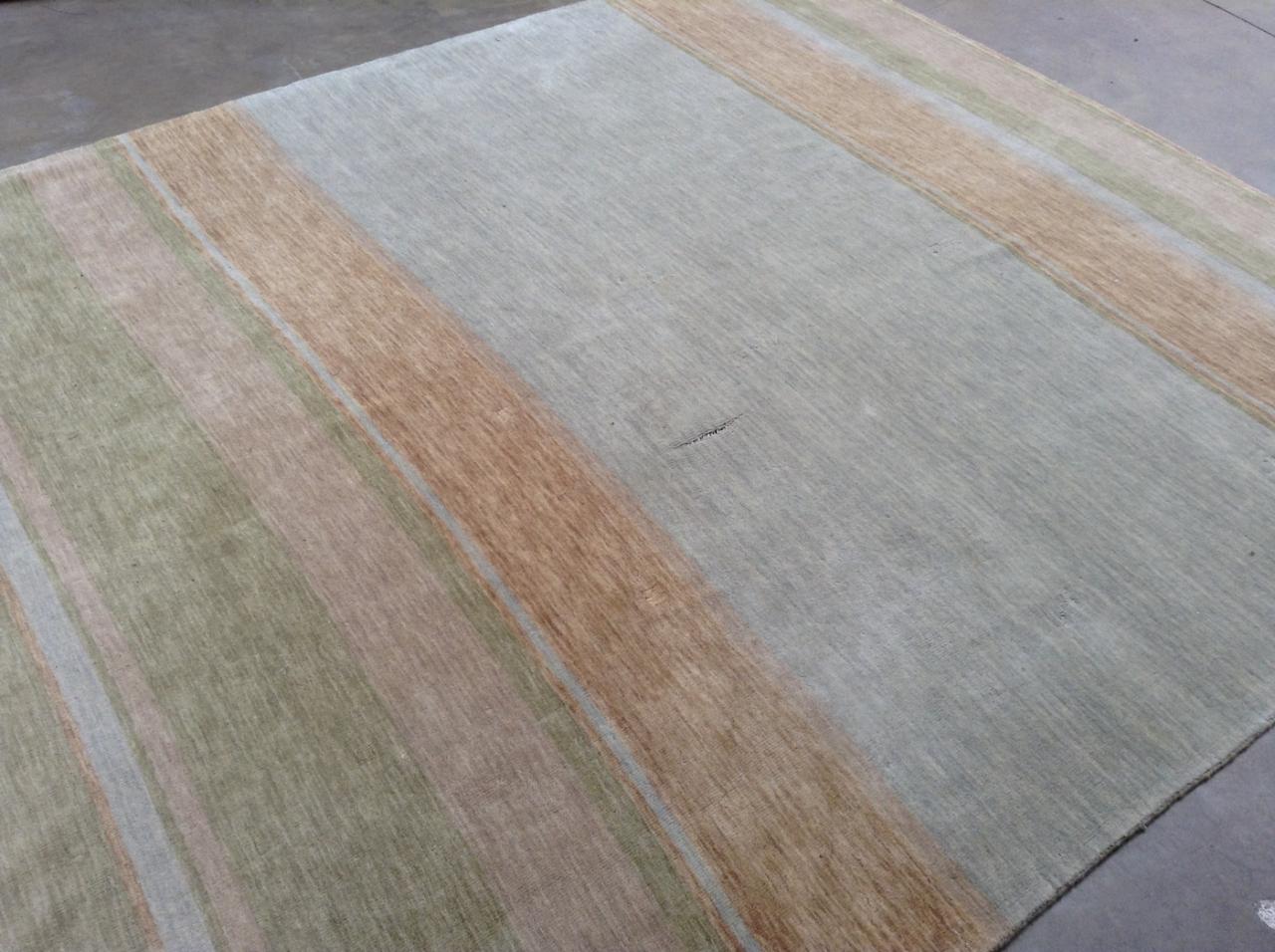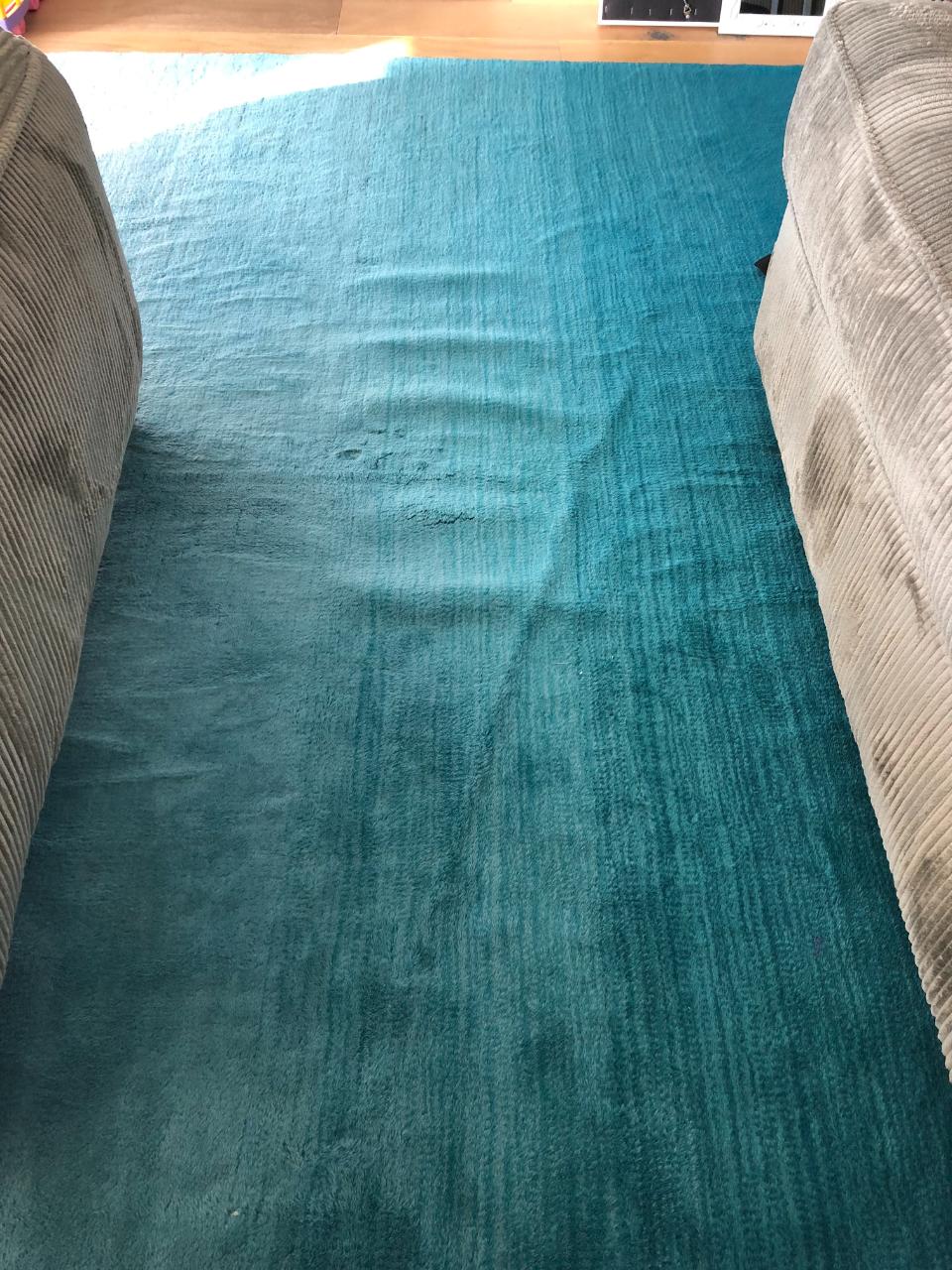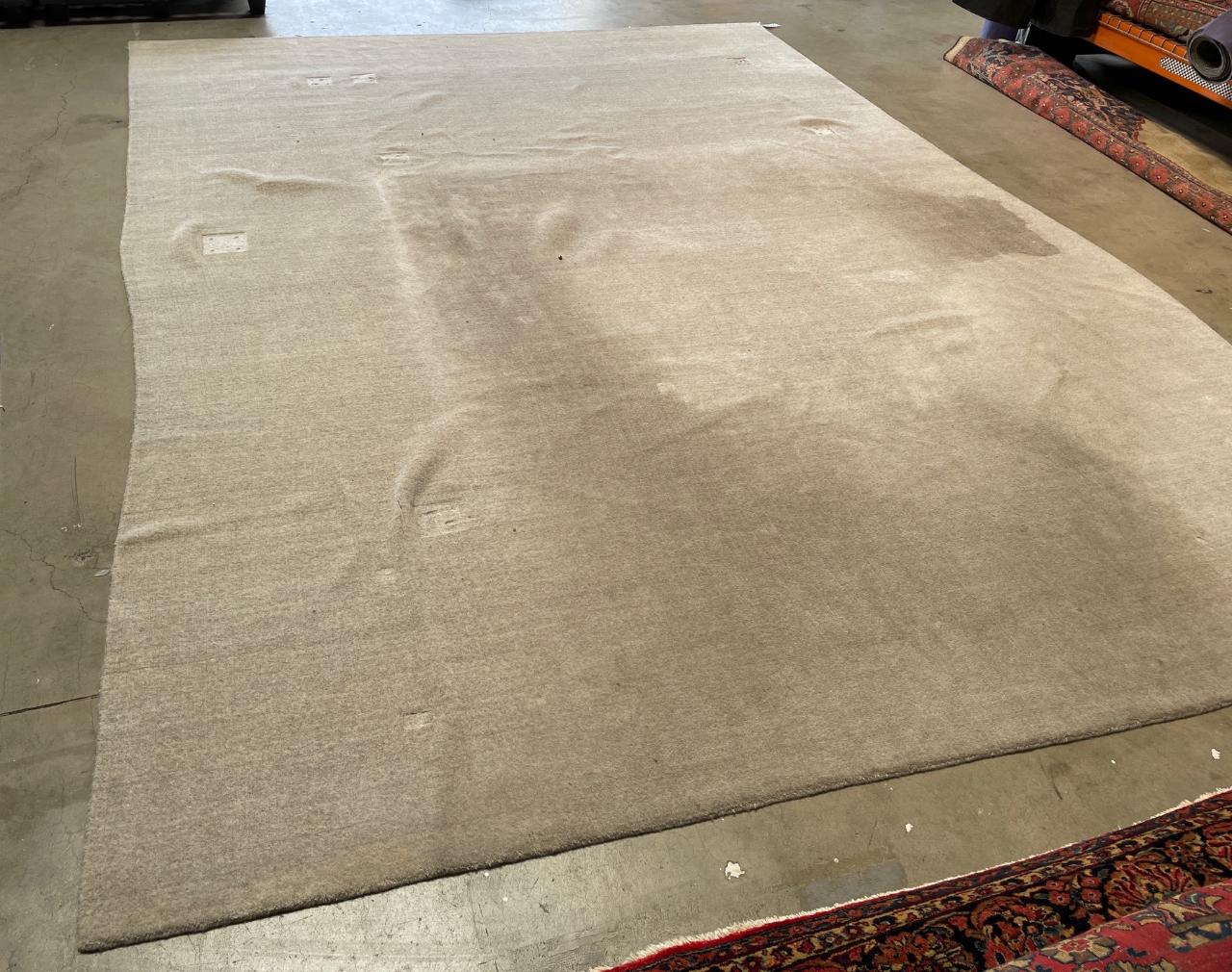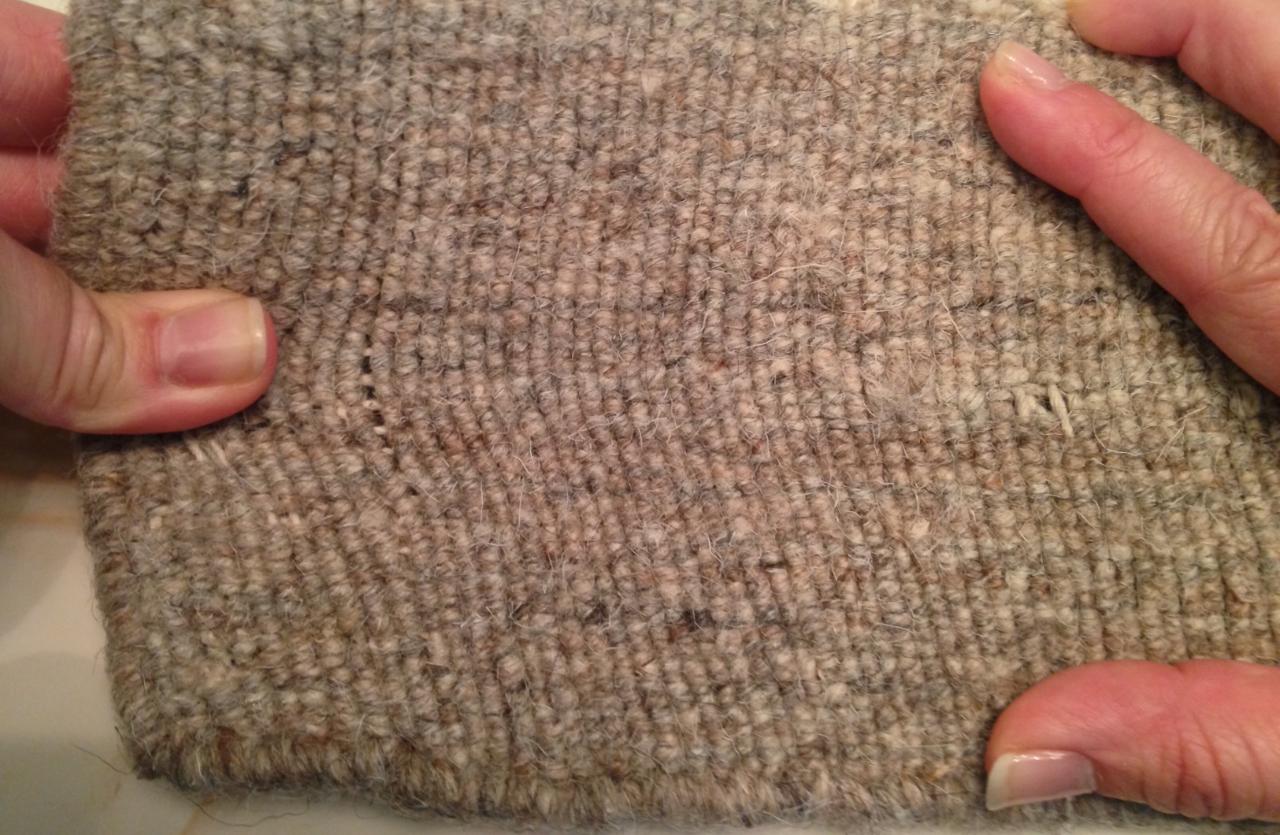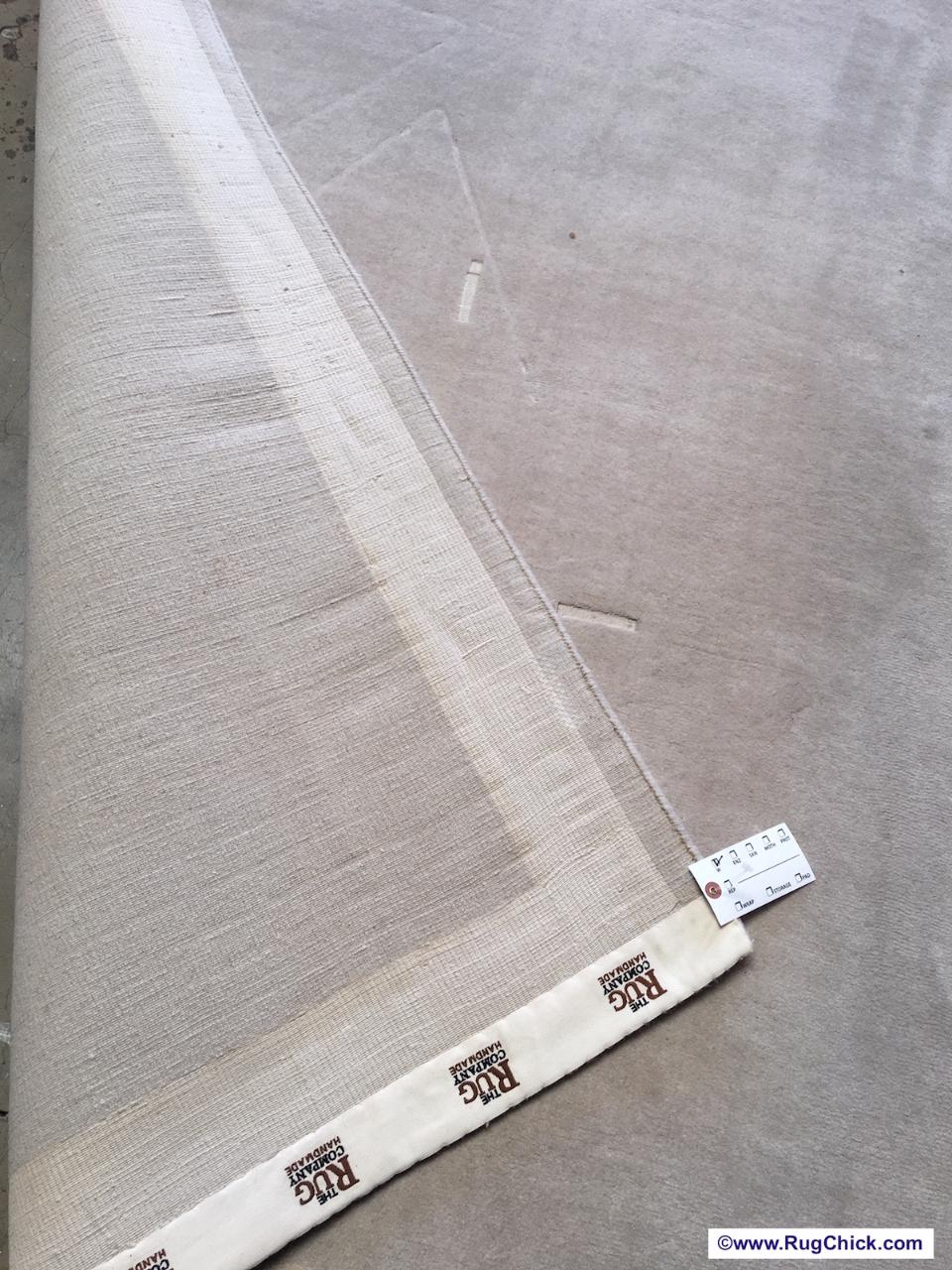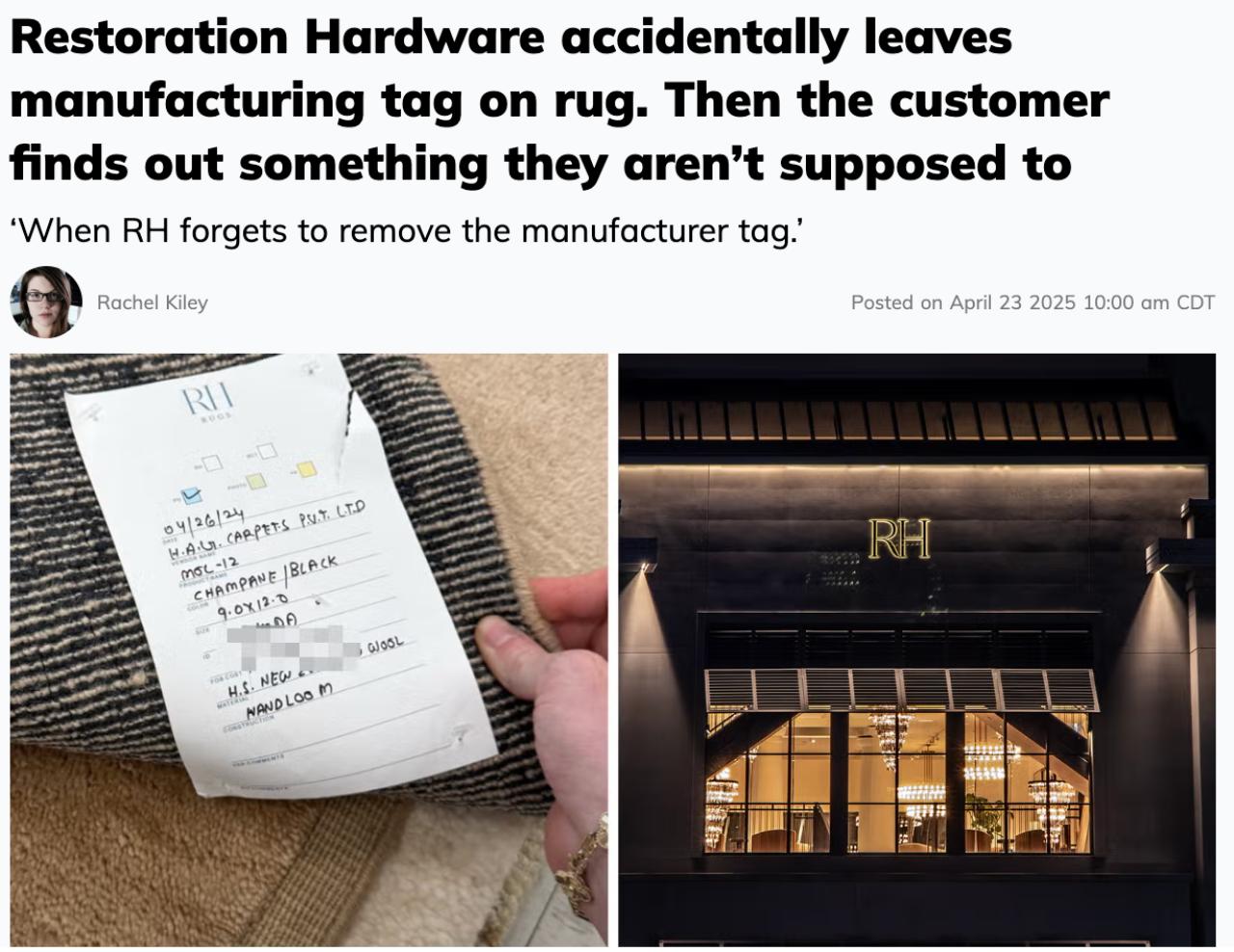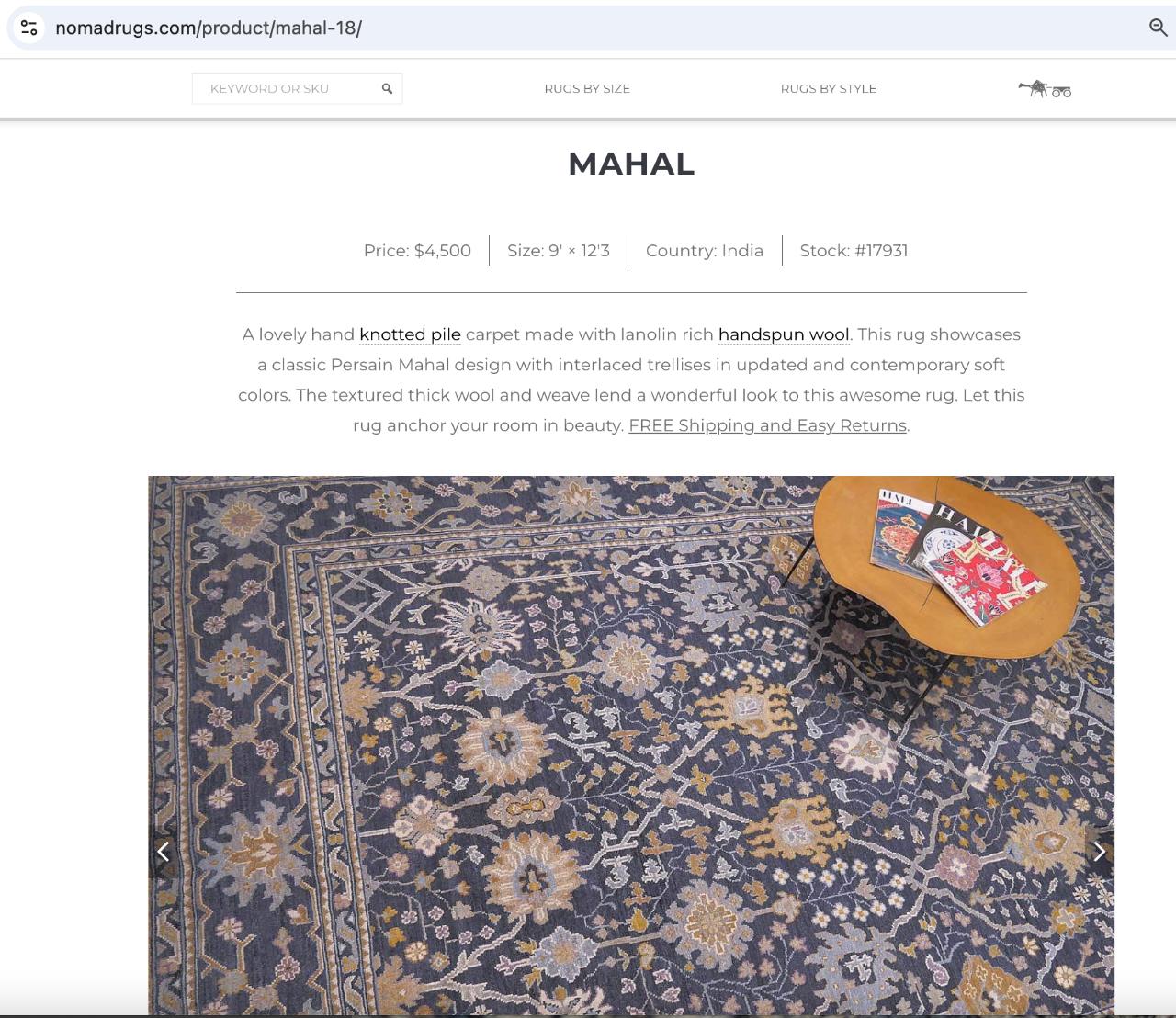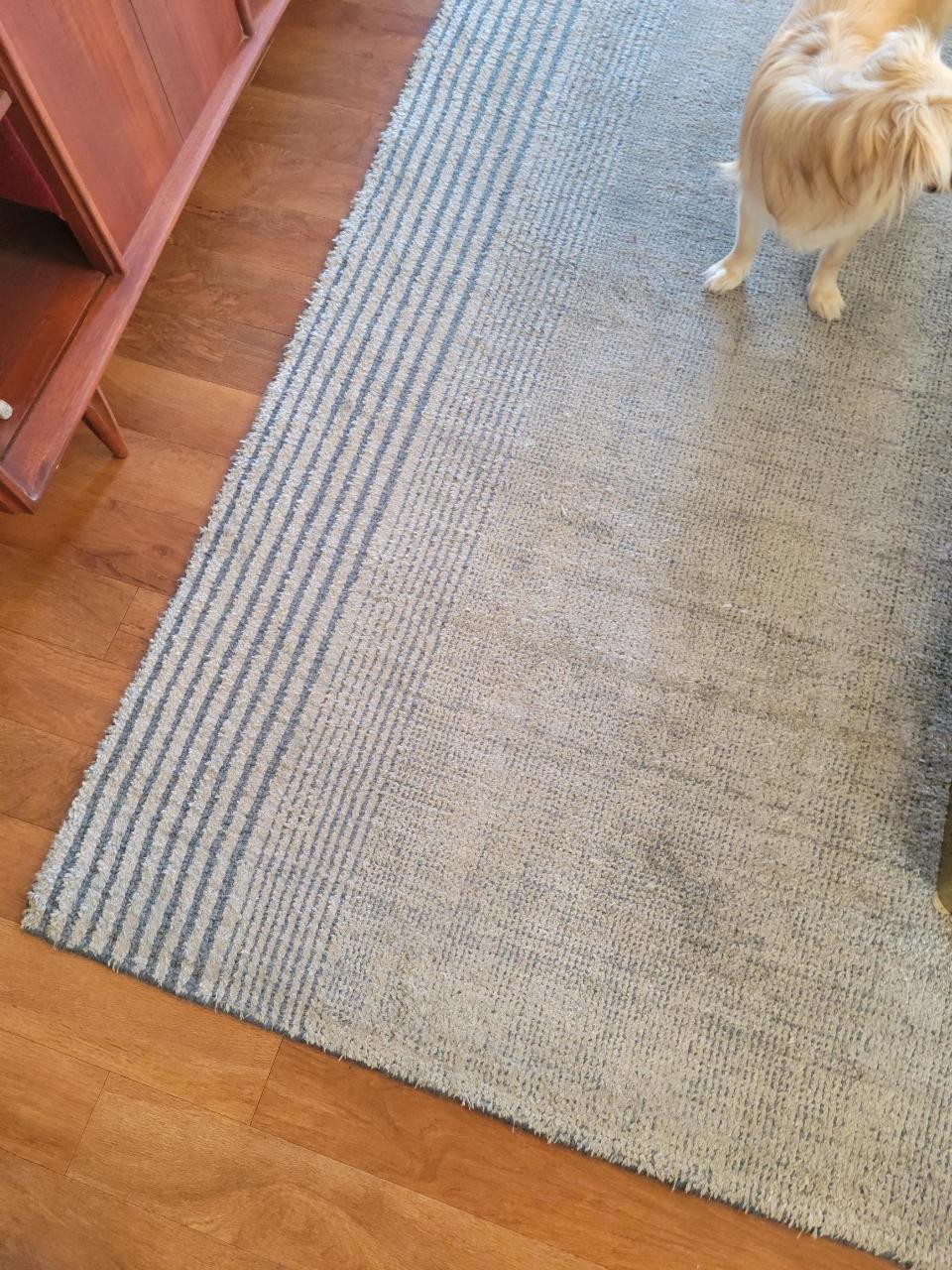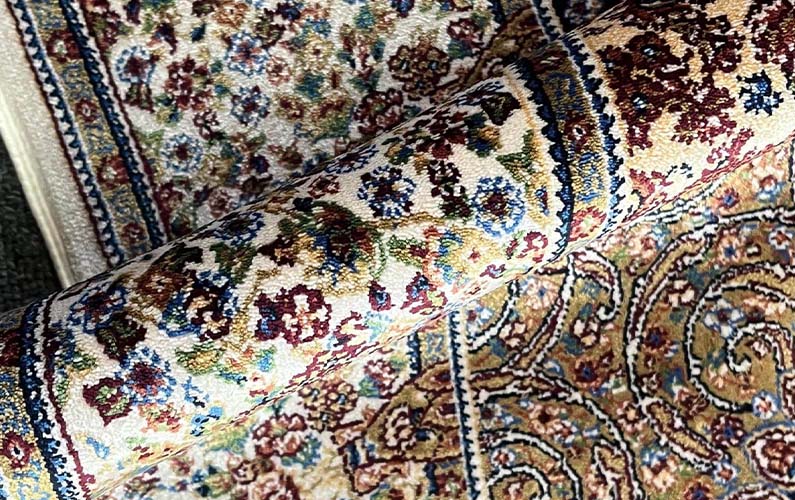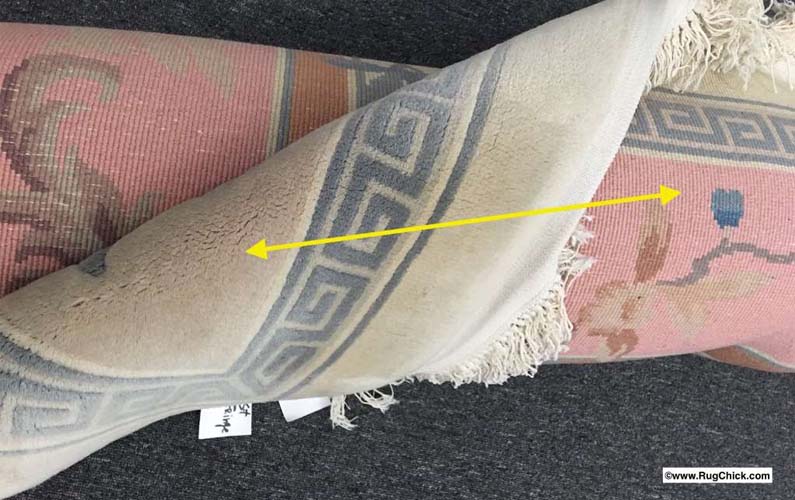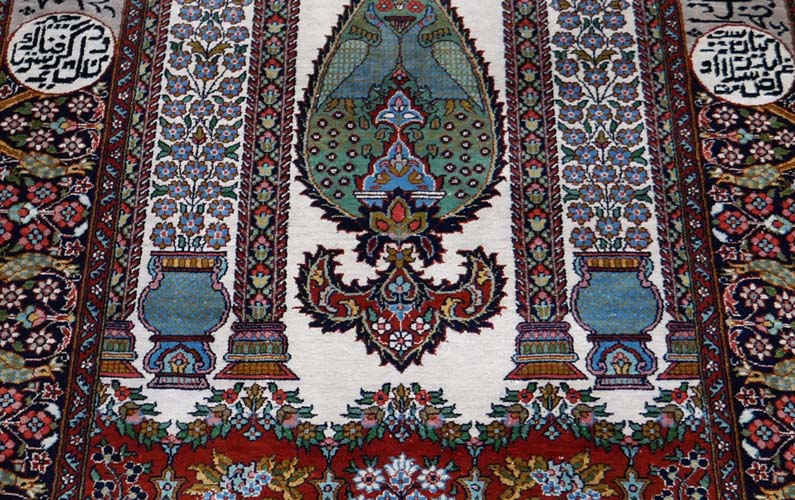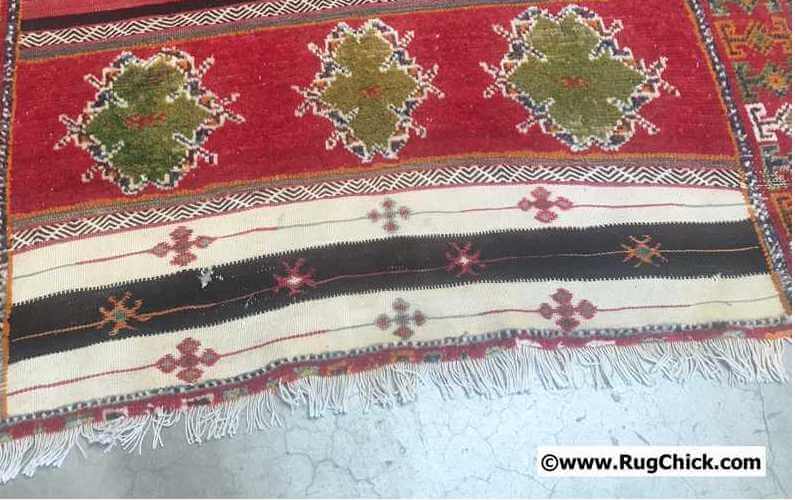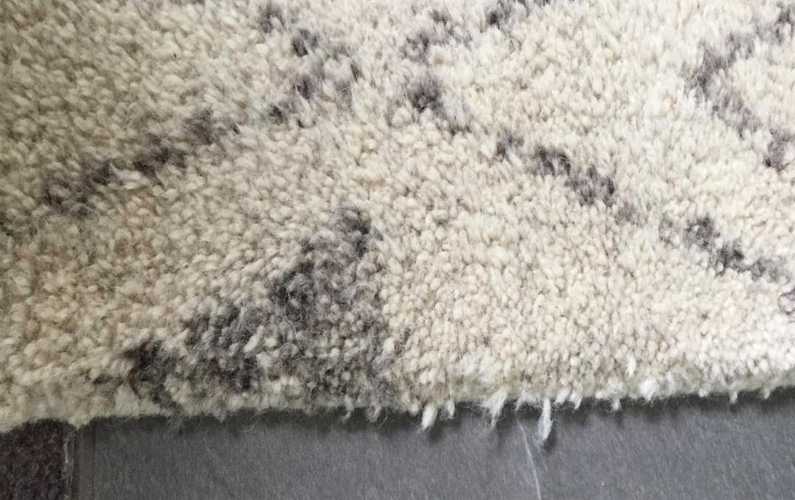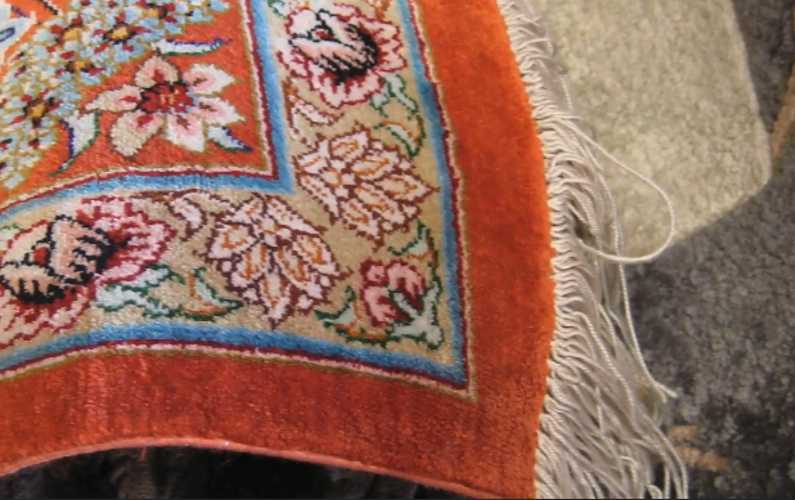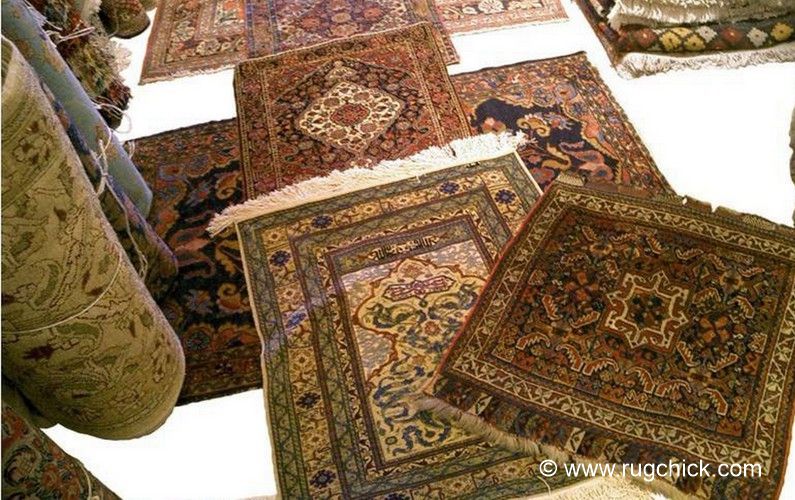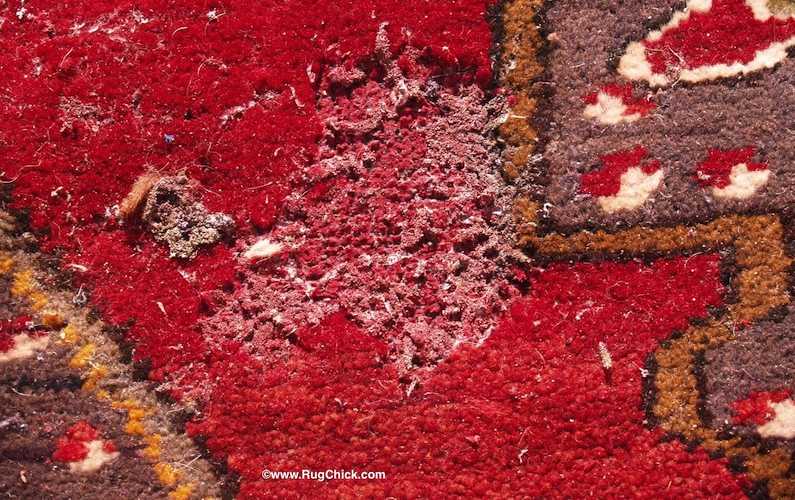India Hand-Loomed Rugs: What You Need to Know
Walk into most rug stores today and you’re likely to hear a comforting phrase: “This new rug from India is handmade.” Sometimes it’s described as hand-woven. However, what’s often being sold is a hand-loomed rug—and that’s a very different story.
Hand-loomed textiles have a long and beautiful history in India, particularly in the making of cloth and flatwoven fabrics. These techniques have traditionally produced items of great beauty and cultural significance.
In the modern rug industry, however, the same “hand-looms” are being used to produce rugs. While some hand-loomed rugs remain good-quality flatweaves, trouble begins when these looms are adapted to create pile rugs—especially cut-pile designs. These tools were not meant for that kind of structure, and the results often include compromised construction and performance
Not all hand-loomed rugs are bad, but some are built with shortcuts that affect their durability, cleanability, and lifespan. The key is knowing how to tell the difference between the well-made loomed rugs and the low-quality ones.
What Does “Hand-Loomed” Really Mean?
- Hand-loomed rugs are made using manually operated horizontal looms, a technique traditionally used for fabrics and flat-weaves.
- Problems arise when this production method is adapted to create pile rugs, which lack the structural support of true hand-knotted construction.
- Lower-quality versions often use stiff foundation yarns that do not maintain shape in use and must be stabilized with glue or sizing.
- These “hand-loomed” rugs are often produced in a matter of days, while a comparable hand-knotted rug may take many months to a year to complete.
- Better-quality hand-loomed rugs avoid adhesives and rely on loop-pile or flat-weave techniques with tightly packed fibers to hold their shape.
- Though technically “handmade” many loomed rugs are closer in construction to industrial fabric than to traditional rug weaving.
Quality Can Vary Widely
Some hand-loomed rugs are made with care, using high-quality natural fibers and tightly woven construction. They are crafted without adhesives and offer reasonable durability with proper use.
Other rugs are produced quickly, often using blends of lower-grade wool and viscose. These versions rely on glue and sizing to hold them together.
Some India rug manufacturers supply identical hand-loomed rugs to both budget and luxury brands. Prices can vary dramatically, however, that difference usually has more to do with branding than with quality.
In today’s rug market, a high price tag is no guarantee of lasting quality, especially with regard to hand-loomed rugs. The lower quality rugs typically use blends of lower-grade wool (not New Zealand wool) combined with filler fibers like viscose, resulting in rugs with poor durability, visible soil retention, and short lifespans
In today’s rug market, the price tag is no longer a reliable indicator of quality. A rug being “handmade” also does not guarantee quality—it only describes how part of the process was done.
5 Signs You May Have a Lower-Quality Hand-Loomed Rug
1. You can pull it apart. Try gently pinching the surface fibers. If tufts pull out or the pile separates easily, it’s a sign the rug is held together more by glue than by actual weaving. This is a sign that the rug is not durable in construction and will not survive long on the floor.
2. The backing feels like glue. A plastic-feeling backing usually indicates a latex or adhesive coating, not a quality woven foundation. This is often a clear glue or sizing so you cannot see adhesives have been used, but you can feel it.
3. It feels stiff or overly perfect. If a rug feels overly rigid or crackly, it may have been stretched and glued into shape. This can cause the rug to warp, ripple, or shrink after cleaning or even with seasonal humidity changes.
4. It changes shape over time. Some low-end loomed rugs are pieced together or stretched to hit size targets, then stabilized with glue. These are rugs that often shrink dramatically after cleaning. These rugs can lose their shape, sag, or buckle around furniture.
5. It shows soil quickly. Many of these rugs are made with blends of brittle wool and viscose. Viscose has poor soil-hiding properties, meaning traffic lanes turn gray quickly. These rugs often look prematurely worn and require more frequent cleaning to remain presentable, which can be an unexpected maintenance cost.
A Real-World Example: The $4.90 Rug Controversy
In 2025, a TikTok user posted a video revealing the manufacturing tag on a popular hand-loomed wool-viscose blend rug sold by a high-end furniture retailer. The tag showed a manufacturing cost (freight included) of just $4.90 per square foot for a 9’x12′ rug—about $529 total—while the rug was being sold in-store for over $5,000.
Caption: Article about TikTok story. Article at https://www.dailydot.com/news/restoration-hardware-rug-markup
The rug was clearly a lower-end hand-loomed construction from India, with a glue-backed structure and materials unlikely to perform well long-term. The outrage focused on the markup. However, what’s even more troubling is how little of that $4.90 actually goes to the people who made the rug.
Let’s break it down:
• Material costs (wool, viscose, glue, backing): likely over 50% of that $4.90.
• Factory operations (equipment, electricity, supervision, packaging): another portion.
• Exporters, freight, tariffs, and customs: more cost layers.
• Margins for importers, wholesalers, and brands: all take their share.
When all of those are accounted for, the weaver may only earn pennies per square foot.
These conditions pressure workers and producers to cut corners just to hit pricing targets. When a room-sized rug is expected to be made for less than what a set of bedsheets costs at retail, something has to give—and that “something” is usually durability, materials, and craftsmanship.
Using Glue To Try To Keep Lower Quality Rugs Square
Some rug makers are transparent about using glue or sizing, and these treatments may be visible in product photos—especially on the back of the rug. However, many use clear-drying adhesives that are nearly invisible in images. What you may not see, you will often feel. A stiff or overly rigid backing is a telltale sign.
Most companies do not disclose their use of adhesives or sizing in hand-loomed or woven rugs—especially if they’re trying to conceal low-quality construction. This lack of transparency makes it difficult for consumers to know what they’re actually buying. Considering that some adhesives and sizing ingredients may be a concern to those with chemical sensitivities, having a rug come to you with undisclosed “ingredients” soaked in the fibers might be an unwelcome surprise.
This is where your local rug cleaner can be an invaluable ally.
Experienced rug care professionals are skilled at spotting construction issues—especially signs of heavy sizing or glue use. These rugs can shrink or distort during cleaning, so experienced cleaners come to recognize sizing as a rug manufacturing flaw. It’s often used to compensate for poor structure, excessive shedding, or lack of dimensional stability.
If you’re unsure about a rug’s construction, a quick consult with your trusted rug cleaner can help you avoid a costly mistake if you are being asked to pay top dollar for a rug that may shrink with its very first cleaning, or may come apart in only a few years of use.
Luxury Priced Hand-Loomed Rug Dangers
A few very large home goods manufacturers use their buying volume to push down costs from their suppliers. In the rug world this inevitably results in lower-quality production methods. However, in the case of luxury brands, these cost savings are rarely passed on to consumers.
As seen in the TikTok example, low-quality hand-loomed rugs are being sold retail at prices more appropriate for high-quality hand-knotted rugs. This is leaving buyers with an expensive product that lacks the durability and craftsmanship they expected.
In the TikTok example, the rug was listed at a retail price of $5,000 for a 9×12 loomed rug, which breaks down to about $46 per square foot. At that price point, consumers could instead find a good-quality hand-knotted wool rug that would last for decades. Here are two that I easily found online at two stores I like. (You can google them as I do not have an affiliate link with either company, I just like them both and was wondering what I could buy if I had $5,000 and wanted a real hand-knotted rug instead of a loomed rug.)
At Nomad Rugs, a rug store I enjoy at www.nomadrugs.com, here is a 9×12 hand-knotted wool rug made in India for less than the loomed rug price. This rug will last many decades.
At The Anou, a great artisan-led weaving community in Morocco, at www.theanou.com, here is a large Moroccan rug at a fraction of the loomed rug cost. This rug will also last for decades.
$46 per square foot for a 9×12 will not buy you the very finest of weaves. (Unless you are lucky buying second-hand vintage of course, where you can sometimes get incredible deals.) However, at this price point you can get very good quality hand-knotted wool rugs that would last under regular use and pass from one home to another over decades, unlike the loomed rugs which often only last a few years.
Consumers Have The Power To Choose Better
This TikTok example is not just a pricing story, it’s also a cautionary one. While some consumers may resonate with the idea of supporting the welfare of artisans and making values-based purchases, most are simply looking for a good deal on a rug they find attractive. And that’s completely understandable.
However, here’s where the real concern lies: many of these hand-loomed rugs, sometimes identical in quality whether sold by budget or luxury retailers, are being priced as if they were hand-knotted heirlooms. When a loomed rug is listed between $20 and $75+ per square foot, it’s not a deal… it’s a mark-up strategy.
At that price point, consumers deserve to know that they have access to real hand-knotted wool rugs with decades of life ahead of them. While they may not be museum-grade, they’re built to last and you should be paying for better quality fibers, construction, and a “look” that will last.
If you’re going to invest at those price levels, make sure the rug you’re buying lives up to that value.
That means asking the right questions, understanding what construction methods are being used, and knowing what fibers you’re actually paying for. It’s frustrating to see rugs made for just a few dollars per square foot being presented as luxury heirlooms. That’s not just misleading, it’s just a flat out lie.
While it’s admirable to support the welfare of weavers and make values-based purchases, the more pressing issue for many is price transparency and actual performance. At these price levels, consumers should be walking away with rugs that can stand the test of time, not ones that begin to break down after only a couple of years and end up headed to the landfill.
Disposable rug decor does not add any value to our world.
So, if you want a rug that truly is handmade with care, here are a few questions to ask before you make your purchase:
What to Ask Before You Buy
- Is this rug hand-knotted, hand-loomed, hand-tufted, or machine made? Don’t rely on vague “handmade” claims.
- What materials were used? Wool is typically better than synthetic blends or viscose, especially for performance and soil resistance.
- Has the rug been chemically bleached to lighten and age the look? These chemicals can leave residues that are a concern, and it can be very damaging to the fibers, shortening the life.
- Can I see the back of the rug? If a company is not willing to show you the back corner, be suspicious. An experienced rug eye can see quality issues in that back corner view. Rug stores that do not post back corner photos may be hiding quality issues.
- Has the rug been stretched or glued? Look closely at edges and corners for warping or unnatural stiffness.
- How is the rug likely to perform in traffic areas? Ask about fiber blends and cleaning frequency. Read the reviews of other shoppers.
- Do I have a trusted rug care expert to contact? Just like you may ask your mechanic for input before buying a car, a professional rug cleaner sees how rugs hold up in real-world use. If you are investing thousands, or tens of thousands, on a rug, getting an expert opinion can help you make a confident and informed choice.
Final Thoughts
The label “handmade” has become a marketing tool. However, not all handmade rugs are made to last. Knowing the difference between high-integrity weaving and shortcut construction can help you avoid a rug that looks great on the showroom floor but disappoints at home.
Well-regarded rug brands may unknowingly sell low-quality hand-loomed rugs alongside their better offerings. Most retailers and designers are not trained to spot weaving shortcuts, especially when those shortcuts are designed to be hidden. That’s why there’s growing value in having a local rug expert you can rely on as a trusted rug friend.
At our shop in San Diego, Blatchford’s, we routinely purchase sample rugs to cut open, test fibers, and evaluate how they’re built. It’s a bit like CSI: Rugs—getting forensic with the fibers to expose what’s really going on inside. 🙂
There is a network of Textile Pro experts that have become trained to identify the hidden production shortcuts in rugs. And as new dangers are identified, we learn and share with our masters network.
The group of experts who delivered the program at a recent Textile Pro Masters event. An event where the best in the textile and floor cleaning fields come together for advanced learning and to network with manufacturers and retailers to help guide them on better quality choices in fibers and construction
Designers and quality-focused retailers can especially benefit from this level of expertise to ensure they’re truly getting the quality they’ve been promised by their rug manufacturing partners. Until the industry becomes more transparent, working with experienced rug experts is one of the best ways to protect your investment, and to raise the standard for rug quality in today’s market.
You can also lean on your rug care expert to let you know which Rug Design Brands are producing the best quality rugs, and are helping to support the weaving communities that are producing those goods, so that you can feel good about the good rug you are about to buy.
Really good rug cleaners love to clean really good quality rugs. And they hate to clean the bad ones. It’s the place to get advice that is not muddied up by a rug sales commission.
NEED RUG HELP?
If you are a rug owner, or an interior designer, seeking help with a rug you already own, or one you are looking to buy, look through our Rug Cleaner Directory. (If you do not have a company in your area, reach out to me through my contact form.)
If you are a Rug Retailer Brand looking for help in evaluating rugs to help ensure quality and performance, you are welcome to reach out to me and I can connect you with one of the rug care experts I know with rug inspection and consulting skills to help you out.
It always helps to have a trusted rug friend to lean on.

